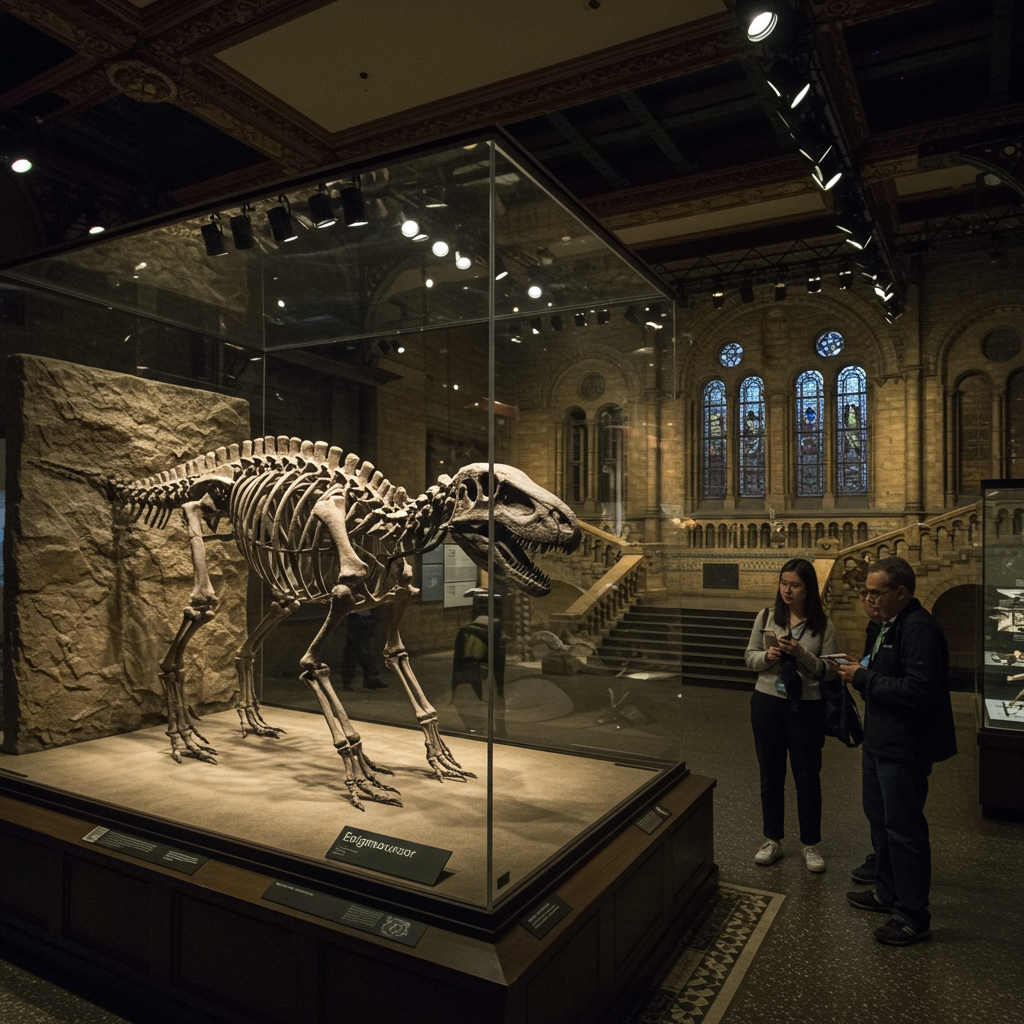Meet Enigmacursor: London’s Newest Dinosaur Resident
London’s Natural History Museum (NHM) is set to unveil a fascinating new addition to its dinosaur collection – a dog-sized species that puzzled scientists for decades. Now correctly identified, this small but significant creature, named Enigmacursor mollyborthwickae, promises to shed new light on the diverse life of the Late Jurassic period.
Originally miscategorised, this remarkable fossil has been reclassified as an entirely new species. Its name, Enigmacursor, translates to “puzzling runner,” a nod to both its mysterious past and its likely nimble nature.
Discovered in the Western United States within the famous Morrison Formation – a rock layer rich with iconic dinosaur fossils – Enigmacursor lived approximately 150 million years ago. Imagine this small dinosaur darting around the massive feet of giants like the mighty Stegosaurus, which also inhabited the same ancient landscape.
The specimen will be the first new dinosaur species to go on public display at the Natural History Museum since 2014, marking a major moment for the institution and dinosaur enthusiasts alike.
Solving the Puzzle: Why a New Species?
For years, the fossil had been labelled Nanosaurus, a catch-all term applied to many small dinosaur finds since the 1870s. However, scientists at the NHM grew suspicious that this classification wasn’t accurate.
Their investigation involved comparing the NHM specimen to the original Nanosaurus fossil in the US. What they found was surprising: the Nanosaurus “archtype specimen” was little more than bone impressions in rock, lacking the detailed anatomy needed for definitive classification. As palaeontologist Professor Susannah Maidment explained, it “could be any number of dinosaurs.”
In stark contrast, the NHM’s fossil is a remarkably complete skeleton for an early small dinosaur, offering a wealth of anatomical detail. It was the unique features found in the bones, particularly the leg bones, that provided the crucial evidence needed to confirm it was a distinct, previously unknown species.
This meticulous work isn’t just about assigning a new name; accurate classification is fundamental to palaeontology. Getting the count and relationships of ancient species correct forms the bedrock of understanding evolution. Based on their findings, the NHM scientists have formally invalidated the entire Nanosaurus category, suggesting other small fossils previously grouped under that name are likely also unique species awaiting proper identification.
What Enigmacursor Tells Us About the Past
So, what do we know about this ancient “puzzling runner”? Based on its fossilised skeleton:
Size: It stood about 64 cm tall and measured 180 cm long – roughly the size of a Labrador retriever, though much more elongated.
Body Plan: It featured significantly larger feet and a tail that was likely longer than the rest of its body. Its head was relatively small.
Speed: Analysis of its solid, dense hips suggests it was built for speed, a likely advantage when living amongst much larger predators and herbivores.
Arms: Its small front arms appear to have been held off the ground; scientists speculate they might have been used like hands to scoop plants into its mouth.
Age: The specimen is believed to have been a teenager when it died.
Beyond its physical traits, Enigmacursor‘s discovery is hugely important for understanding dinosaur evolution. Smaller dinosaurs from the Late Jurassic are considered critical because they are closely related to the ancestors of the massive and sometimes “bizarre” dinosaur groups that dominated later periods.
Palaeontologists study these early forms to trace the evolutionary pathways that led to the giants. New discoveries, whether of individual specimens like Enigmacursor or even entirely new lineages like the transitional tyrannosaur Khankhuuluu recently found in Mongolia, continually refine our understanding of how these incredible animals diversified and adapted over millions of years. Enigmacursor helps to fill in gaps in our knowledge, showing how key changes occurred gradually, revealing the pressures that ultimately drove the evolution towards larger, more specialised forms.
Bringing an Ancient Skeleton to Life
Preparing Enigmacursor for display has been a delicate process. Conservators Lu Allington-Jones and Kieran Miles meticulously assembled the fossilised bones onto a custom-built metal frame. “I don’t want to damage it at this stage before its revealed to everybody,” shared Ms. Allington-Jones, head of conservation, highlighting the care required.
The skeleton will be housed in a special glass case on a balcony in the museum’s impressive Earth Hall, fittingly situated above Sophie the Stegosaurus – a fellow resident of the ancient Morrison Formation. This placement visually emphasises the size difference between the small runner and the giant it coexisted with.
Professor Paul Barrett, a palaeontologist at the museum, expressed excitement about having such a complete skeleton of a small dinosaur. Historically, the focus in fieldwork has often been on finding large bones, leading to smaller, equally important fossils being overlooked. The hope is that discoveries like Enigmacursor will encourage researchers to keep “eyes close to the ground looking for these little ones” in the future.
The detailed findings about Enigmacursor mollyborthwickae have been published in the scientific journal Royal Society Open Science*, making this significant discovery available to the global scientific community.




